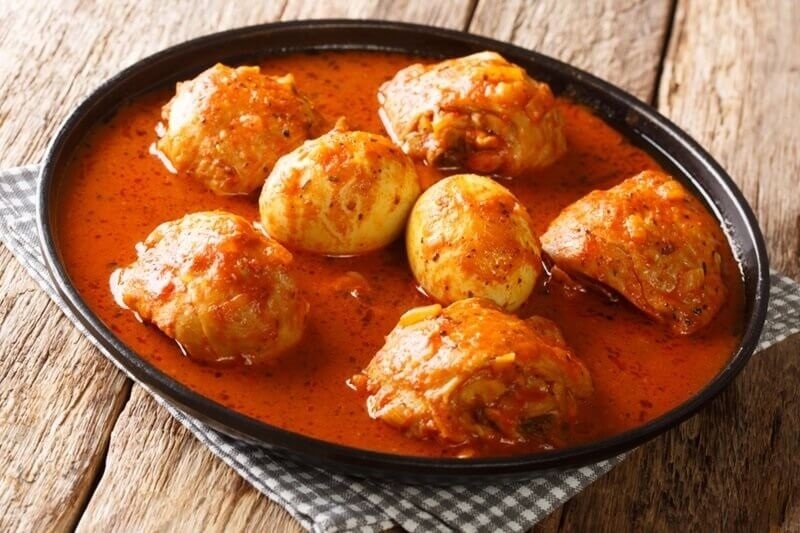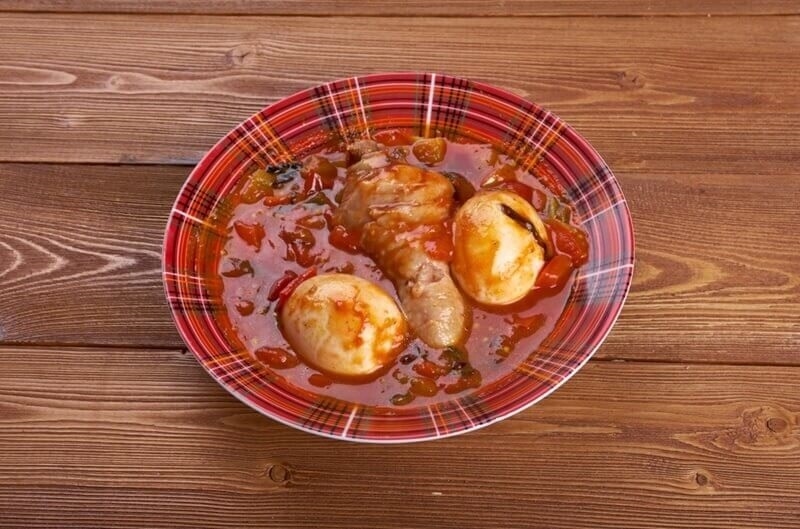
If bold flavors and soul-soothing comfort food from Africa cross your mind, then you may likely think of just one dish—the Ethiopian Doro Wat Recipe. This dish has been voted amongst the most common and most popular of the traditions of Ethiopian cuisine due to its gorgeous red color, slow-simmered onions, spiciness, and soft and succulent chicken.
African cuisine is quite insightful to a person who is new to it, but on the other hand, it is so fascinating for people who adore the original taste and flavours of it. So, for those who are not familiar with this type of food, preparing it at home would be quite a fantastic adventure.
Doro Wat isn’t just a dish, it represents a feast that’s the mainstay of celebrations, comprising holidays, family get-togethers, and religious ceremonies. The food gives a pictorial representation of Ethiopia’s culinary magnificence and the importance that spices have in the country's food.

The main ingredient of this recipe is tons of onions. Actually, the amount of onions used in Doro Wat is more than in any other stew; hence, it forms the most profound flavor base. The onions are gradually cooked till they reach the texture of a homemade paste. Though the duration to complete this process is quite long, the authenticity of the taste is what makes the process indispensable.
Doro Wat's incomparability is due to one particular thing only, namely, the berbere spice, a scalding and perfumed mix comprising chili peppers, garlic, ginger, fenugreek, and other spices. This spicy concoction is the very essence of the stew, attributing it the heat, the complexity, and the depth. The pairing of spiced chicken with the outcome is strikingly memorable.
For the preparation of the mouth-watering Doro Wat, you should have the following ingredients in your kitchen:
Below is a detailed, step-by-step description of how to make Ethiopian chicken stew:
Put the chopped onions in a dry pot and place it over medium fire. Stir the onions continuously until they soften and shrink in volume, and thus, release their moisture. This step can last 15-20 minutes. Patience is a must here.
After reaching the stage where onions have softened, the place is now for the butter and oil. Stir in the garlic and the ginger. Cook until the fragrance is there.
Add the pot with the berbere spice. Mix well to cover the onion mixture completely with the spice. This step extracts the smoked and spicy flavors.
Put in the tomato paste and let it cook for a few minutes. This allows for color to be enhanced and adds a bit of sourness to the dish.
Put the chicken pieces in the pot. Stir so they get evenly covered with the spice base.
Put the chicken broth or water in the pot. Lower the heat, cover, and let it simmer slowly until the chicken is soft. This is normally a 40-50-minute period.
The tradition is that the boiled eggs are added in the final moments. They absorb the flavors of the sauce and thus make the dish more satisfying.
Try it and add salt if it is needed.
No traditional Ethiopian meal is complete without injera, the spongy flatbread made from teff flour. Injera is not just a side—it’s the spoon, plate, and companion for the stew. Pieces of injera are torn and used to scoop up the Doro Wat, thus creating a communal dining experience.
If you lack the presence of injera, Doro Wat can be paired with rice, flatbreads, or even crusty bread. Though not traditional, all of them still make quite a good match.
Berbere should be given the spotlight all by itself since it is the main ingredient in almost all berbere spice seasonings. Depending on how much chili is added, it can be either mild or very hot. A little of the spice often includes coriander, cardamom, nutmeg, and allspice, which makes it not only spicy but also fragrant.
In Doro Wat, berbere is the carrier of charm, smoky sweetness with layers of warmth that one can trace along the tongue. You can use it for lentil stews, roasted vegetables, or even as a dry rub for grilled meats if you are the type that loves to experiment.
Doro Wat is ranked among the most praised African festive food choices. It is the foremost dish that is displayed not only on Christmas and Easter but also on weddings in Ethiopia. The dish-making process of this meal is going to be quite hectic, but the outcome will be rewarding. The method of slowly intensifying flavor is a metaphor of the importance of family gatherings and festivities.
Sharing food is a way of showing love and respect in Ethiopian culture. When the Doro Wat is presented, it’s more than just a stew—it becomes a connection moment.
Here are some helpful tips to succeed:
By cooking this at home, you can have a taste of one of the most popular spicy African chicken dishes. It is not just about carbs and heat—laying accent on the peacefulness of the spices, the tender meat, and the comforting slow cooking all make up what is essentially a delicious meal. The sauce gets rich, the spices become wonderfully warm, and the distinct texture of injera makes for a memorable dining experience.
For those who are into berbere spice recipes, Doro Wat is like the debutante ball you have to attend before making your first move into the world of everyday cooking. This is what it comes to once you figure out how to use berbere for your everyday cooking.
Getting familiar with the Ethiopian Doro Wat Recipe is just like going through the Ethiopian tastes without moving a step from your kitchen. With the slow simmering of the onions to the red-hot berbere spice, the whole procedure of cooking tells the tale of tradition and love. When paired with injera, it is one of the most iconic traditional Ethiopian meals.
Regardless of whether you are preparing it for your family or are going to use it for a festive dinner, this dish will add fire, comfort, and warmth to your table. Besides that, it also lets you savor one of the greatest culinary treasures of Africa.
This content was created by AI